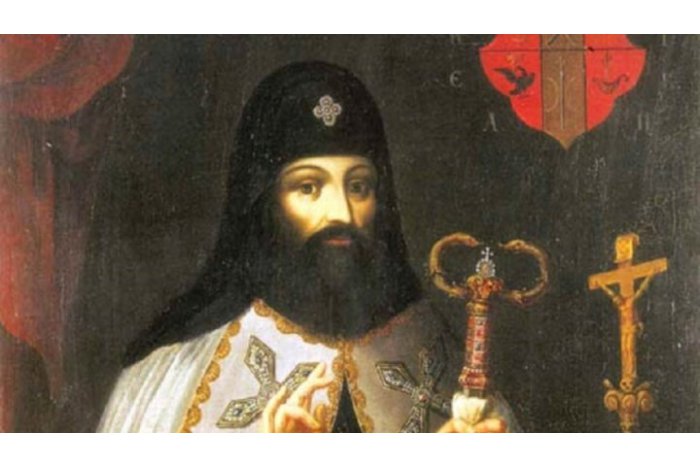Petru Movila, architect of Eastern Orthodoxy's Revival
17:15 | 23.02.2021 Category:
Petru Movila was a fortress of Orthodox spirit in the Slav world. He wrote a golden page in the history of the Ukrainian Church and became an eternal symbol of the Orthodox resistance and dignity in the most unfavorable times of its existence.
Petru Movila was born in Suceava in a family of boyars from the Moldova of the 17th century on 31 December 1595. The history knows famous names which brought the fame of the Movila family, which gave Moldova and Walachia more rulers, among whom Petru’s father, Simion (Ruler of Walachia, with interruptions, in 1599-1601 and of Moldova in 1606-1607) and his brother, Ieremia Movila (Ruler of Moldova, with a short interruption , on the period 1595-1606). On his mother’s line, Petru Movila was descendant of a noble family from Poland, of Hungarian ethnic origin.
The beginning of the 17th century was marked by a harsh fight for reign in Moldova. Being directly involved in these fights, the family of the young Petru Movila emigrated to Poland. Petru received his early education in Poland, at the Orthodox school from Lviv and then continued the education in the Western Europe, including at universities from Paris and the Netherlands. In Poland, he was officer for a while. Nevertheless, the young Petru was more attracted by the monastic life. He preserved his Orthodox faith on the entire period, when he lived in Catholic and Protestant countries.
Wishful for a quiet life and willing to dedicate himself to deep studies of religion, the young Petru Movila in 1622 withdrew to the eastern part of the Poland’s Kingdom. He bought a house and a land plot at Rebejovka, nearby Kiev, where he constructed a wood church with the patron, Saint John the New of Suceava. Nevertheless, after five years spent in seclusion and studying of the Holy Scripture and the Saint Fathers of the Church, Petru Movila ruled to join the monks of the Kiev Pechersk Lavra, where he turned monk with the same name of Petru in November 1627 and after only several months, he became Father Superior and then was raised to the rank of archimandrite at the age of only 31 years. Shortly afterwards, the exceptional erudition and the irreproachable behavior allowed Petru to become the superior of the most prestigious monastery of the Slav world.
During the five years of holding the position of superior at Pechersk Lavra, Archimandrite Petru carried out an activity which contributed to the enhancement of the level of education in the Eastern Orthodoxy, which suffered from an acute shortage of books and well-trained staff. At an initiative by Movila, more religious books were printed than the Ruthenian Church had had till then. Afterwards, he laid the foundations of a college, first in Lavra, then at the Bratska Monastery, from which the well-known the Kiev-based Theological Academy developed in 1633.
The acceding to power of a more moderate Polish king and more loyal to the Orthodoxy, Wladyslaw IV Vasa, required a Metropolitan of the Orthodox Church who was to be able to peacefully and with dignity defend the faith from the proselyte Catholic aggression recorded earlier. In the context, the happiest choice was made in 1633. Petru Movila became Metropolitan of Kiev with direct canonic jurisdiction of Constantinople.
Movila had the vision of a Polish-Lithuanian Republic, which included an Orthodox Ukraine, where all religions were to be equal and develop freely. On the other hand, he sincerely believed that, in a further future, all dissensions would be overcome and the Christian churches, including the protestant one, would unite in a single church. Being aware of the intellectual advantage of the Catholic religion, which had at its disposal hundreds of institutions dealing with theological researches, Movila started teaching the Orthodox clergy to read and write. Shortly afterwards, Movila translated in the Ukrainian language the West’s classical theology book of the 15th century, The Imitation of Christ, by Thomas a Kempis and adapted it to the concerns of the Orthodoxy.
Petru Movila wrote more works. He was most often evoked and criticized due to them. In 1637, he published an annotated edition of those four Gospels. In 1647, Movila published a revised edition of the Euchologion, known as the Great Prayer Book. He also wrote short scientific assays about faith articles and a Short Russian Catechism for the use of the Russian Church.
The best known work is The Orthodox Confession of the Catholic and Apostolic Eastern Church, which he made as reaction to the Jesuitical Catholic Order and the western reformers from those regions of the Old Russia, which were under Polish rule.
The aforementioned Confession by Metropolitan Petru Movila was discussed at the pan-Orthodox Synod from Iasi in 1642 and recognized as valid and was afterwards edited in the entire Europe in the Greek, Latin, German and Russian languages. In 1672, the Holy Synod of the Church of Jerusalem adopted Petru Movila’s Confession as official catechism. The first edition of the Confessuion appeared in Romanian language in 1699.
One of the most important and lasting achievements of Petru Movila was the foundation of a Theological Academy in Kiev. This was an institution set up under western model and was training Orthodox staff with fundamental theological education.
The Rome authorities were earlier hostile to the eastern Slavs; yet, later on, they had to recognize the incontestable progress of the Kiev Church, made due to efforts by Petru Movila.
Petru Movila is undoubtedly the most representative and emblematic figure of the Orthodox Church of Ukraine. He modernized and strengthened the Orthodoxy in full crisis and avoided its assimilation by the Catholicism.
Petru Movila was canonized as saint by the Churches from Ukraine, Romania and Poland.

